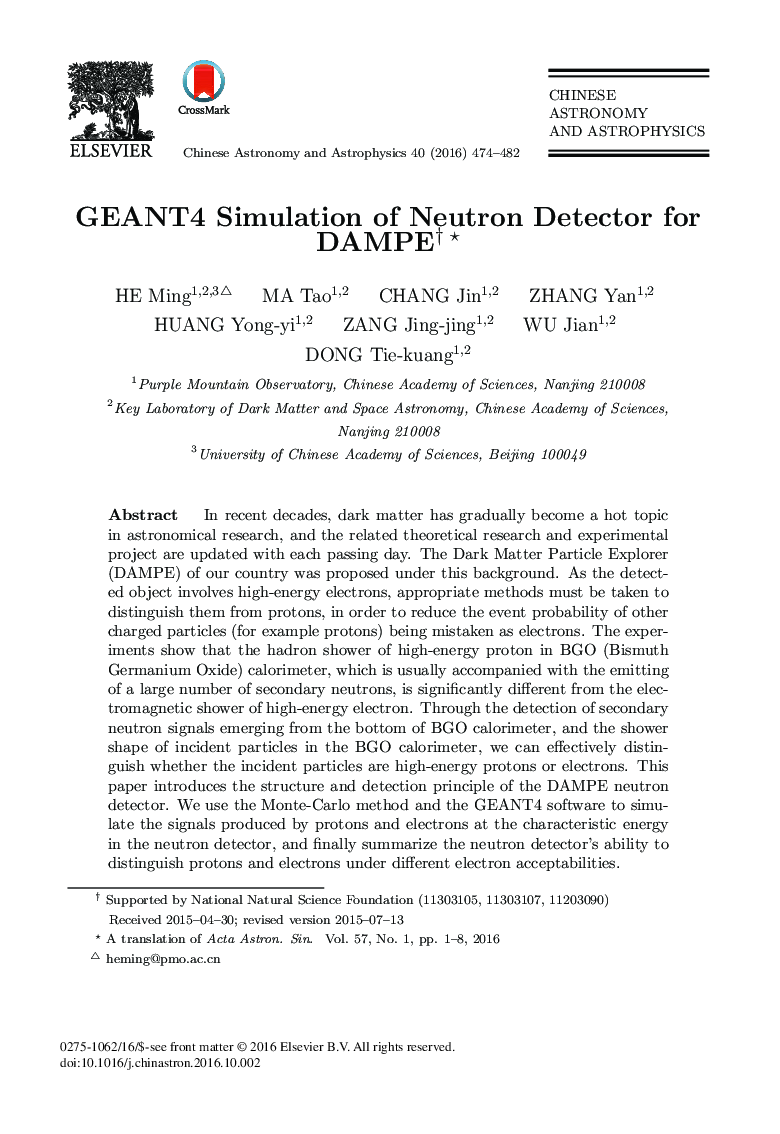| Article ID | Journal | Published Year | Pages | File Type |
|---|---|---|---|---|
| 8133374 | Chinese Astronomy and Astrophysics | 2016 | 9 Pages |
Abstract
In recent decades, dark matter has gradually become a hot topic in astronomical research, and the related theoretical research and experimental project are updated with each passing day. The Dark Matter Particle Explorer (DAMPE) of our country was proposed under this background. As the detected object involves high-energy electrons, appropriate methods must be taken to distinguish them from protons, in order to reduce the event probability of other charged particles (for example protons) being mistaken as electrons. The experiments show that the hadron shower of high-energy proton in BGO (Bismuth Germanium Oxide) calorimeter, which is usually accompanied with the emitting of a large number of secondary neutrons, is significantly different from the electromagnetic shower of high-energy electron. Through the detection of secondary neutron signals emerging from the bottom of BGO calorimeter, and the shower shape of incident particles in the BGO calorimeter, we can effectively distinguish whether the incident particles are high-energy protons or electrons. This paper introduces the structure and detection principle of the DAMPE neutron detector. We use the Monte-Carlo method and the GEANT4 software to simulate the signals produced by protons and electrons at the characteristic energy in the neutron detector, and finally summarize the neutron detector's ability to distinguish protons and electrons under different electron acceptabilities.
Keywords
Related Topics
Physical Sciences and Engineering
Physics and Astronomy
Astronomy and Astrophysics
Authors
He Ming, Ma Tao, Chang Jin, Zhang Yan, Huang Yong-yi, Zang Jing-jing, Wu Jian, Dong Tie-kuang,
